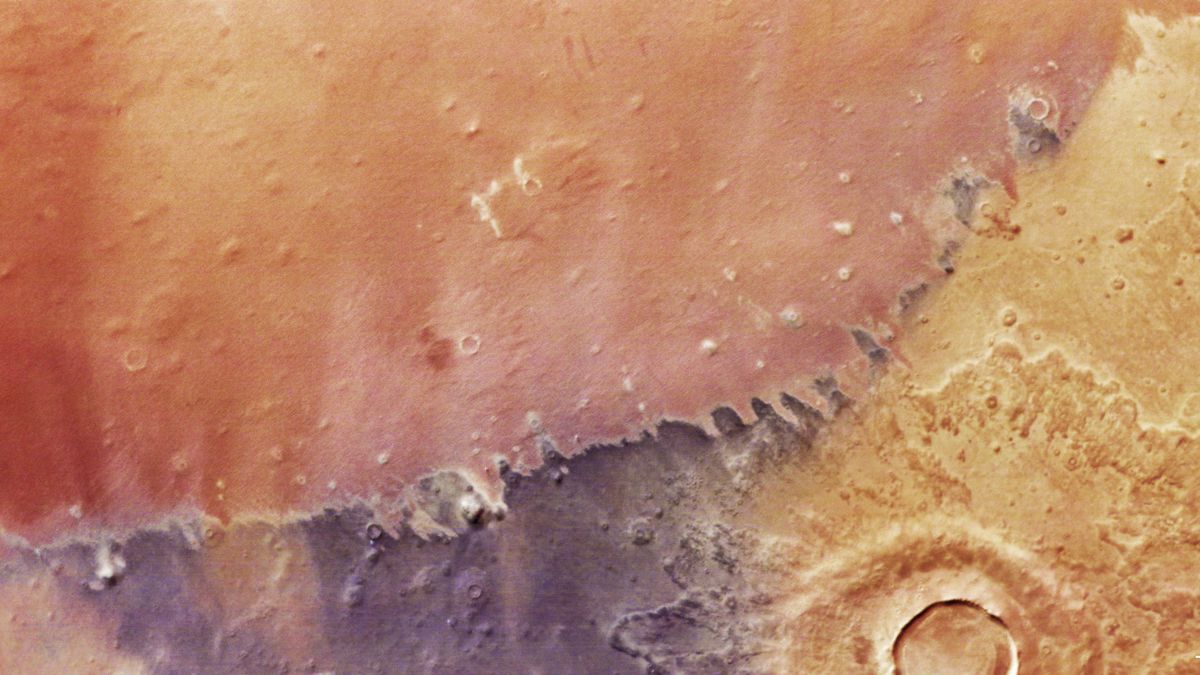Now Reading: ESA’s New Satellite Image Unveils Mars in Striking Purple, Yellow, and Orange Hues
-
01
ESA’s New Satellite Image Unveils Mars in Striking Purple, Yellow, and Orange Hues
ESA’s New Satellite Image Unveils Mars in Striking Purple, Yellow, and Orange Hues

Fast Summary:
- A new satellite image from the European Space AgencyS (ESA) Mars Express orbiter showcases Arcadia Planitia, a region on Mars known for its diverse coloring in shades of yellow, orange, brown, and red.
- The high-resolution photo reveals features such as a prominent 9-mile-wide impact crater with layered material around it indicating water ice presence during its formation.
- Four dust devils can be seen snaking across the Martian surface; these are formed when heated air rises from the ground and lifts dust particles into swirling columns.
- Wind erosion has shaped parts of Arcadia Planitia’s landscape, including ridged formations called “yardangs” in the reddish region and varying terrain based on differences in silicate composition near purplish-brown areas of low iron concentration.
- The area is geologically significant with solidified lava flows aged up to three billion years and is considered critical for research regarding Mars’ history and human habitation potential.
!Image 1
photo shows an Earth-toned view of Arcadia Planitia featuring an impact crater and active dust devils.
(Image Credit: ESA/DLR/FU Berlin)
!Image 2
Simulation highlighting Arcadia Planitia’s location near Olympus Mons.
(Image Credit: ESA/NASA/USGS/DLR/FU Berlin/MGS/MOLA Science Team)
Indian Opinion Analysis:
The detailed satellite imagery released by ESA provides significant insights into Mars’ geological history. For India’s burgeoning space exploration programs like ISRO’s upcoming missions to study planetary systems under initiatives such as MOM (Mars Orbiter Mission), this data complements global efforts by establishing benchmarks for future exploratory goals. Understanding regions like Arcadia Planitia-rich in water ice deposits-coudl play a pivotal role in developing strategies for exploring extraterrestrial resources or supporting long-term human settlement plans.
For scientific collaboration, India may benefit from leveraging relationships with international space agencies like ESA to share technical expertise related to imaging technology or martian geology advancements.As space exploration grows increasingly competitive yet cooperative internationally, contributions toward decoding environments such as those showcased here strengthen humanity’s collective ability to venture beyond Earth while fostering innovation at home.























